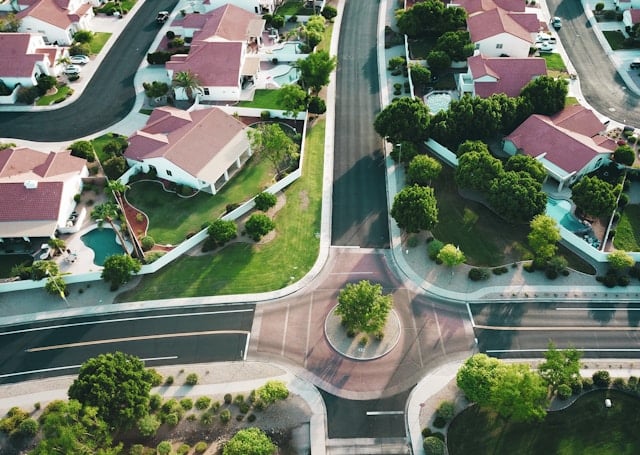What are the challenges and opportunities for real estate development in post-industrial landscapes?

The real estate landscape has always been a dynamic one, continuously evolving with changes in socio-economic conditions, technological advancements, and geographical expansions. A significant trend shaping this sector in recent years has been the focus on post-industrial landscapes, spaces that were once buzzing with industrial activities but have now either been abandoned or drastically underutilized due to various factors such as deindustrialization or urban migration. This article delves into the complexities surrounding the development of such landscapes, including the challenges real estate developers face and the promising opportunities that can be harnessed.
The State of the Industrial Real Estate Market
The industrial real estate market has always been a key component of the overall real estate industry. With the emergence of the pandemic and its subsequent effects, the market experienced a profound shift. The pandemic has accelerated the need for new types of spaces, such as logistics centers and warehouses, due to a growing e-commerce sector. However, this has also burdened the sector with the challenge of transforming outdated industrial sites into spaces that cater to these modern needs.
A lire en complément : How to leverage the gig economy and shared services in the design of modern real estate projects?
Post-industrial areas are often characterized by large, vacant industrial buildings that are no longer viable for modern industry. Additionally, these areas are typically located within or near urban centers, where land availability is scarce. Therefore, the potential for real estate development in these areas is immense. Still, it is fraught with obstacles such as environmental concerns, zoning restrictions, and financial viability.
Challenges in Developing Post-Industrial Properties
Developing post-industrial properties presents a unique set of challenges. These include environmental contamination, restoring or repurposing outdated buildings, acquiring the necessary permissions, and securing sufficient funds for these projects.
Dans le meme genre : What are the innovative solutions for sound insulation in dense urban real estate developments?
Many industrial sites have a history of heavy industrial use, which may have led to environmental contamination. This could range from soil and water contamination to the presence of hazardous materials like asbestos in buildings. Dealing with these issues is not only costly but also time-consuming, often requiring the involvement of environmental consultants and specialists.
Moreover, the buildings in these sites are often outdated, requiring significant investment in restoration or repurposing. Developers may need to work closely with architects and construction companies to transform these spaces into commercially viable properties. Additionally, obtaining the necessary permits and permissions for these projects can be a complex and lengthy process, often involving multiple regulatory bodies.
Opportunities in Post-Industrial Real Estate Development
Despite these challenges, the development of post-industrial properties is rife with opportunities. Utilizing these spaces not only contributes to urban renewal and revitalization but can also deliver significant financial returns.
One of the most significant opportunities in this area lies in the adaptive reuse of buildings. This involves repurposing an old building for a new use, such as converting a factory into an office space or a warehouse into a residential apartment complex. This can be a cost-effective and sustainable method of real estate development, often resulting in unique and attractive properties.
Moreover, post-industrial landscapes are typically located in or near urban areas, making them prime real estate for commercial and residential development. With increasing urbanization, the demand for such spaces is likely to grow, offering lucrative opportunities for developers.
Strategies for Successful Industrial Real Estate Development
To capitalize on these opportunities, developers need to adopt strategic approaches. This could include collaborating with local communities and authorities, investing in sustainable construction practices, and exploring innovative financing options.
Community engagement can play a crucial role in the success of these projects. By involving the local community in the planning and decision-making process, developers can ensure that the project meets the needs of the community and gains their support.
Sustainability is another crucial factor. With increasing awareness about environmental issues, sustainable construction practices can not only help mitigate environmental risks but also make the property more attractive to potential buyers or tenants.
Lastly, innovative financing options, such as public-private partnerships or impact investing, can help overcome financial challenges. These can provide the necessary funds for development while also ensuring that the project delivers social and environmental benefits.
The Future of Post-Industrial Real Estate Development
The future of post-industrial real estate development looks promising. As the urban population continues to grow and the demand for space in cities increases, the development of these areas is likely to become an important part of urban planning and development.
Moreover, with advancements in technology and construction practices, it is now more feasible than ever to transform these sites into sustainable and commercially viable properties. From artificial intelligence and virtual reality in planning and design to green construction practices and renewable energy sources, technology can play a crucial role in overcoming the challenges associated with post-industrial development.
However, it is crucial that this development is carried out responsibly, ensuring that it contributes to sustainable urban growth and development. This involves not only addressing environmental and financial challenges but also taking into account social and cultural considerations, such as preserving the industrial heritage of these sites and ensuring that the development benefits the local community.
Despite the challenges, the development of post-industrial landscapes offers immense opportunities to reshape our cities, contribute to urban renewal, and drive economic growth. As we move into the future, it is evident that these spaces will play a crucial role in shaping the real estate landscape.
The Impact of Commercial Real Estate in Post-Industrial Areas
The role of commercial real estate in post-industrial areas is a key factor in urban and economic development. As the real estate industry continues to grow, the transformation of post-industrial landscapes into viable commercial real estate spaces is becoming increasingly critical.
Post-industrial areas often lie in close proximity to urban centers, making them attractive for commercial real estate development. These areas often boast existing infrastructural elements, such as roads and utilities, which can be leveraged to support new commercial developments.
However, developing commercial real estate in these areas can sometimes be a complex process due to factors such as zoning restrictions, environmental concerns, and potential resistance from local communities. Developers may need to navigate complex legal and regulatory frameworks, engage in extensive community consultation processes, and potentially invest in environmental remediation or other site clean-up activities.
Nevertheless, successfully transforming post-industrial landscapes into vibrant commercial real estate hubs can result in significant benefits. It can contribute to urban revitalization, create jobs, stimulate economic growth, and provide new amenities for local communities.
The Role of Adaptive Reuse in Post-Industrial Real Estate Development
Adaptive reuse, or the process of repurposing outdated industrial buildings for new uses, is becoming an increasingly popular strategy in post-industrial real estate development. This approach not only makes use of existing structures, reducing the need for new construction, but also preserves the historical and cultural significance of these buildings, which often hold a unique place in local communities.
These adaptive reuse projects can range from transforming old factories into modern office spaces, converting abandoned warehouses into residential apartments, or repurposing underutilized industrial sites into vibrant retail or entertainment venues. This approach can be highly sustainable, minimizing the environmental impact associated with new construction and contributing to the preservation of architectural heritage.
However, adaptive reuse in post-industrial areas requires careful planning and strategic decision-making. Developers need to consider factors such as the structural integrity of the buildings, the feasibility of the proposed new use, the potential market demand, and the overall financial viability of the project.
Conclusion
In conclusion, the challenges and opportunities associated with real estate development in post-industrial landscapes are multifaceted. Despite the obstacles such as environmental contamination, regulatory complexities, and financial challenges, these areas provide promising opportunities for urban revitalization, economic growth, and sustainable real estate development.
Adaptive reuse stands out as a particularly promising strategy, offering a sustainable and culturally sensitive approach to the redevelopment of post-industrial areas. Through careful planning, strategic decision-making, and engagement with local communities, developers can successfully transform these areas into thriving commercial real estate hubs.
Looking ahead, as technology continues to advance and urban populations continue to grow, the development of post-industrial landscapes is poised to play a crucial role in the future of the real estate industry. This, coupled with an increased focus on sustainability and community engagement, can pave the way for successful and responsible real estate development in these areas.
Moving forward, it’s evident that the future of the real estate landscape will significantly involve the development of post-industrial areas. With careful consideration of the associated challenges and a strategic approach to harnessing the available opportunities, developers can make significant contributions to urban renewal and economic growth.
